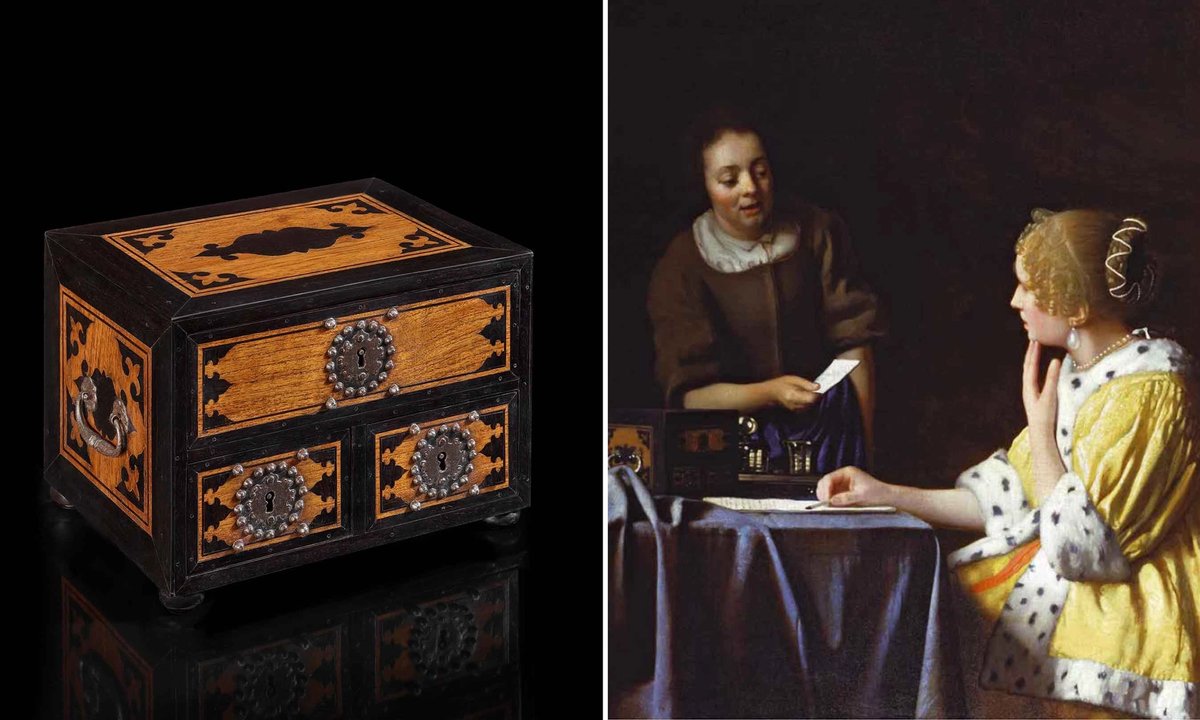
"The casket is Indo-Portuguese, made in the 17th century in the port of Cochin (now Kochi, in the south of India) by a skilled local craftworker for a European buyer. It integrates both Indian and Portuguese design. Such caskets, created from teak and ebony, are now extremely rare, and Van Dongen tracked down what may be the sole surviving example with the help of the Amsterdam dealer Dickie Zebregs."
"These types of caskets would have been very expensive in 17th-century Holland and it is almost inconceivable that Vermeer could have afforded one. Yet he has accurately depicted a casket in the two paintings, which means that he presumably had an example in his studio. It is therefore quite conceivable that she asked Vermeer to include her precious casket in Mistress and Maid and A Lady Writing, both of which are believed to have been in her collection."
An object depicted in two Vermeer paintings has been identified as an Indo‑Portuguese jewellery casket made in Cochin in the 17th century by a skilled local craftworker for a European buyer. The casket combines Indian and Portuguese design and was fashioned from teak and ebony, making such examples extremely rare today. A possible sole surviving example is held in the Tavora Sequiera Pinto collection in Porto and will go on display next year. These caskets would have been very expensive in 17th‑century Holland, making a wealthy patron and Dutch East India Company shareholder a plausible source for Vermeer’s example.
#johannes-vermeer #indo-portuguese-casket #maria-de-knuijt #dutch-east-india-company #17th-century-decorative-arts
Read at The Art Newspaper - International art news and events
Unable to calculate read time
Collection
[
|
...
]